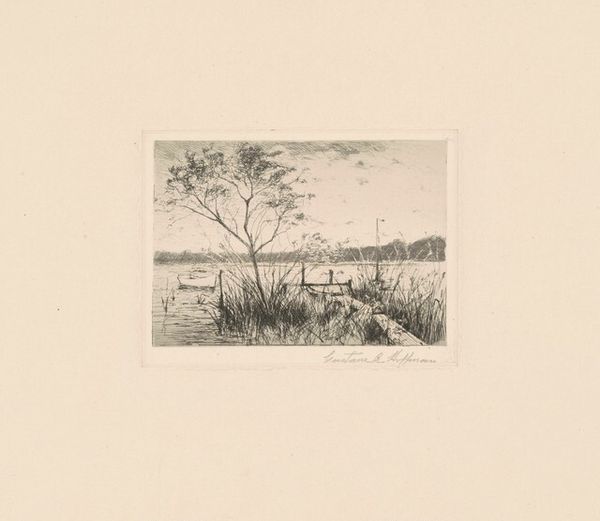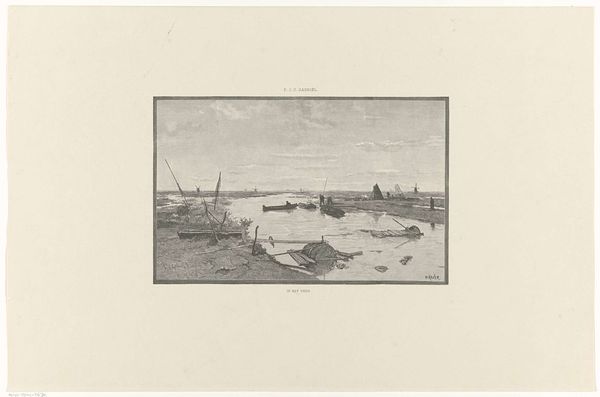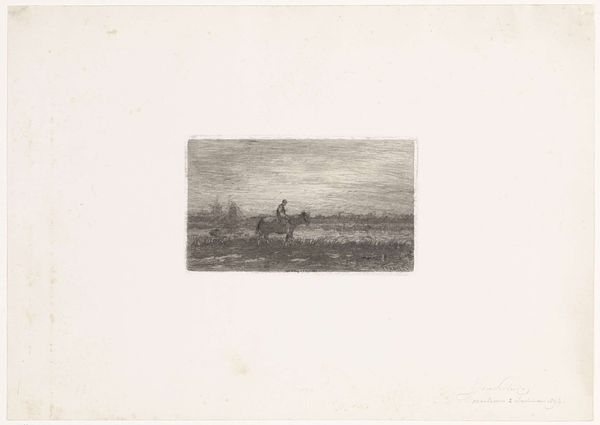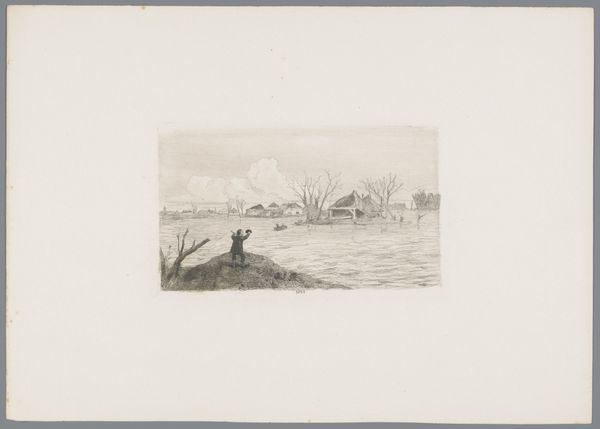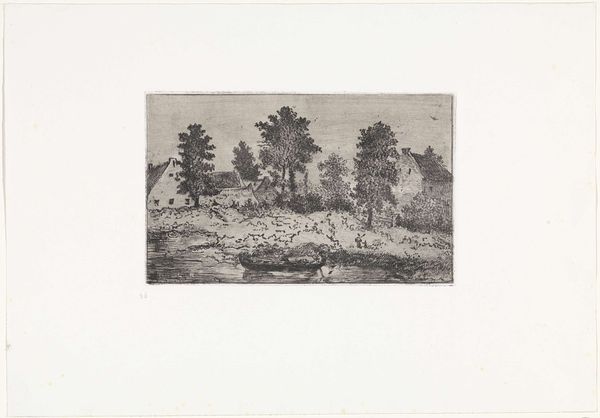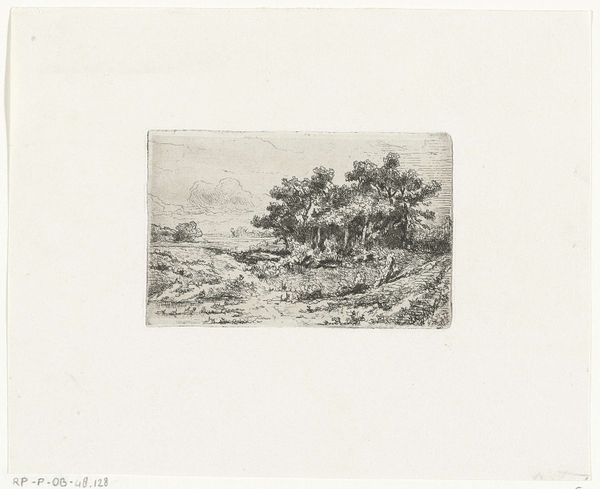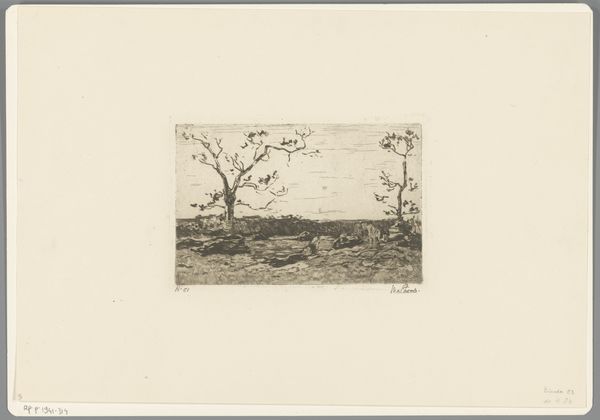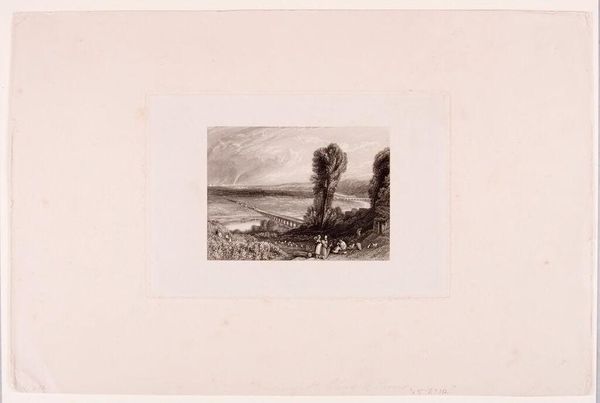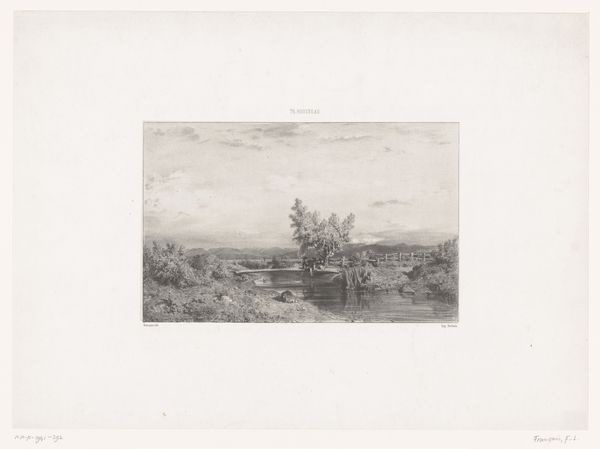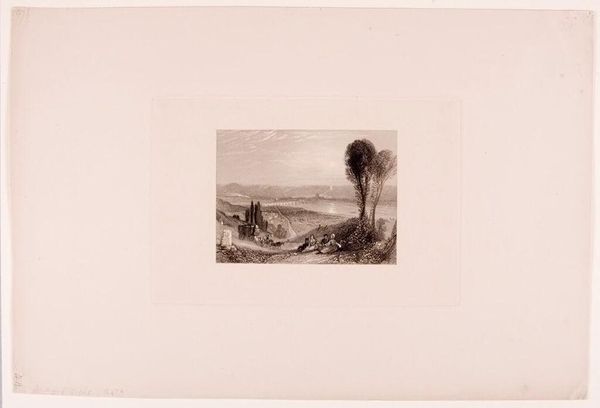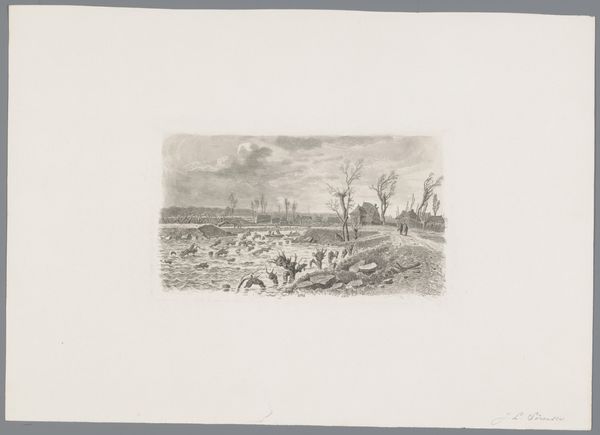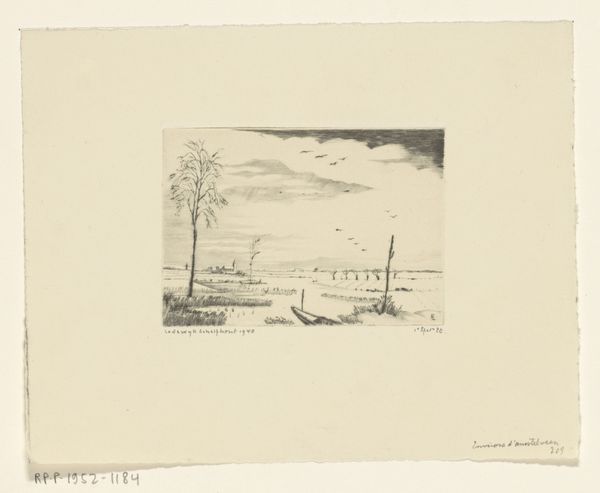
print, etching
etching
landscape
orientalism
genre-painting
realism
Dimensions: height 331 mm, width 504 mm
Copyright: Rijks Museum: Open Domain
Curator: I’m instantly drawn to the peaceful mood this etching creates, all watery reflections and soft greys. It feels incredibly still, a real meditative space. Editor: That's "Waterleliën", or "Water Lilies," a print made sometime between 1850 and 1899, now held here at the Rijksmuseum. The artist goes by M. Weber, and it is, as you said, an etching. Curator: Weber really captures the serene feeling of being near calm water. The little boat with the lone figure somehow intensifies that feeling, doesn't it? Like they’ve found some perfect, isolated spot. The image has that Orientalist influence, you know? That feeling of an undisturbed Eden. Editor: Yes, water lilies, the single figure in the boat. Lilies are often associated with purity and peace, across various cultures. But seeing it through the lens of Orientalism is interesting... the West's fascination with a seemingly untouched, idealized East. Curator: Exactly! And look how meticulously each leaf and ripple is rendered! The water lilies are the clear focal point—tiny life rafts for bees or something! Weber's choice to focus on a seemingly quiet scene reveals so much about how people perceive landscape. Editor: The water becomes a mirror, blurring the boundary between water and sky and creating that ethereal effect, and I think what you say about mirroring is fascinating in connection to purity. Curator: The subtle perspective really enhances this, allowing the water to feel boundless while creating this safe, embracing, intimate landscape. Editor: And thinking of the medium as an etching. Each tiny line builds up the whole composition...a parallel to how slowly the artist must have studied the image and absorbed his own emotional perception of the location to finally transfer it as an artistic idea. Curator: I can feel Weber quietly observing. Editor: Indeed, I appreciate that what could be taken as a pretty landscape view, and probably was at the time it was created, can be considered in our age as something far deeper and intricate. Curator: Absolutely. It speaks volumes about the artist's deep engagement with nature and the viewer's projections. Editor: I see a little promise and timelessness in Weber's watery landscape.
Comments
No comments
Be the first to comment and join the conversation on the ultimate creative platform.

